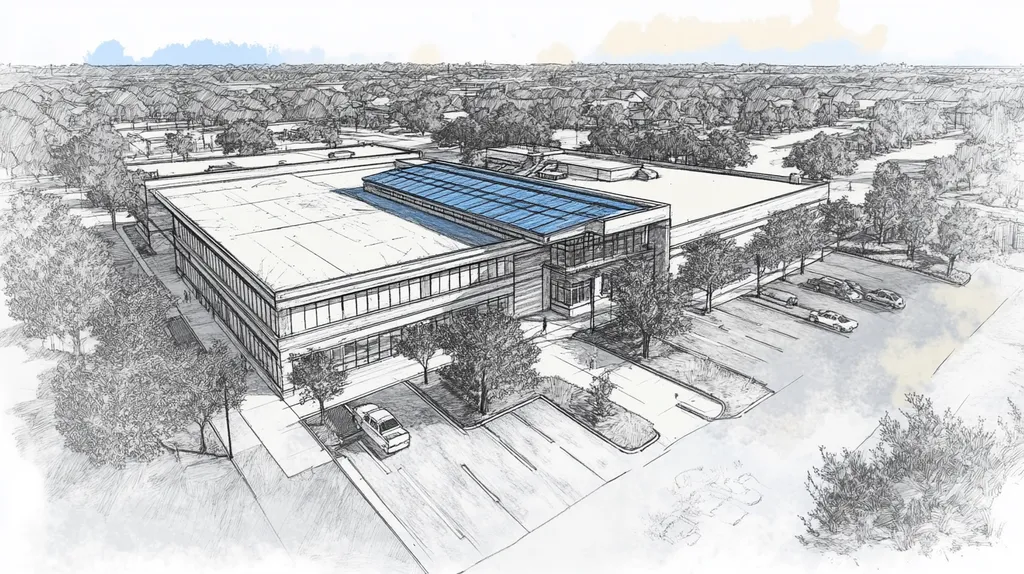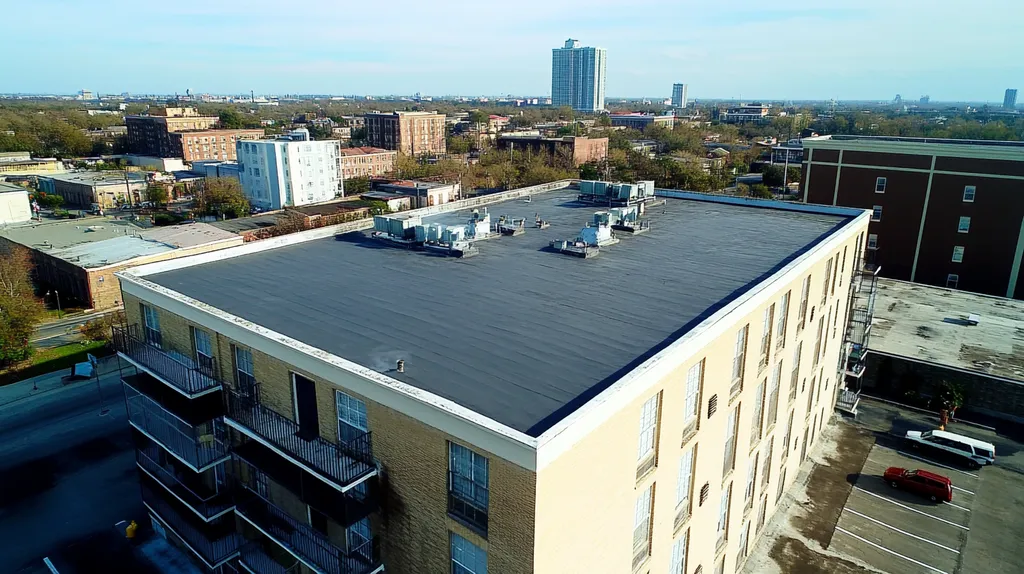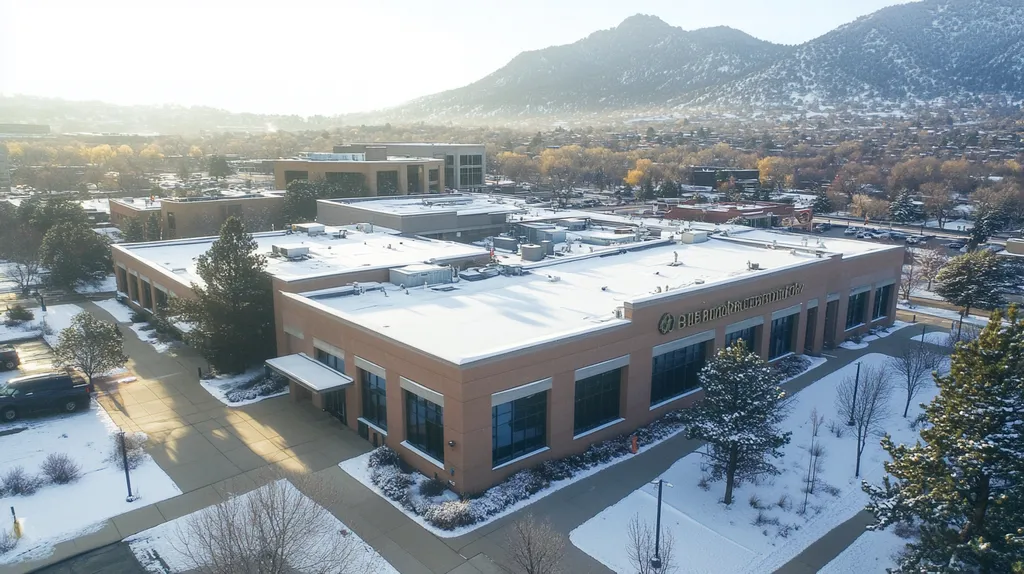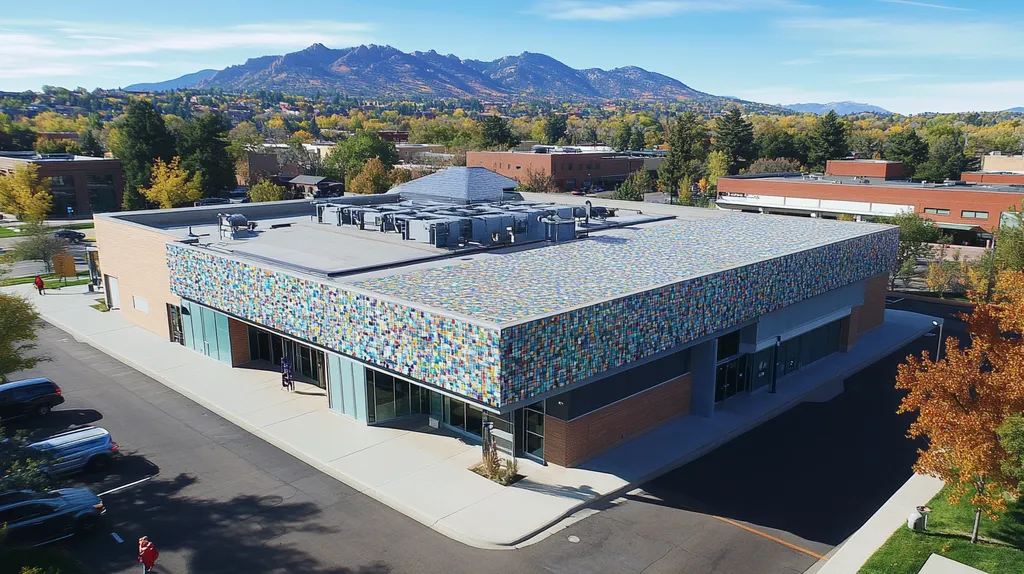When it comes to commercial roofing, environmental regulations are transforming the industry faster than a summer storm rolling in. With the EPA now imposing over $11 billion in annual penalties for non-compliance, property owners can’t afford to ignore these crucial standards.
From material selection to waste management, every aspect of commercial roofing faces increasing scrutiny under current environmental laws. Studies show that roofing projects generate up to 40% of construction waste in landfills, putting this sector squarely in regulators’ crosshairs.
This comprehensive guide breaks down the essential environmental regulations affecting commercial roofing projects, offering clear strategies for compliance while maintaining operational efficiency.
SECTION 1: FUNDAMENTAL CONCEPTS
The roofing industry is under growing scrutiny from environmental regulations, impacting commercial projects in significant ways. Did you know that around 14% of urban waste comes from roofing materials? This stark statistic places pressure on property owners to adapt to newer standards, all while avoiding the risk of costly penalties. To thrive in this changing landscape, it’s essential to understand these regulations, select appropriate materials, and work towards a sustainable future. This section delves into the foundational environmental regulations, the ecological consequences of different roofing materials, and the essential compliance requirements that every project should consider.
Overview of EPA Regulations
The U.S. Environmental Protection Agency (EPA) enforces a range of regulations affecting roofing projects nationwide. These regulations are designed to reduce pollution and encourage sustainable practices within the industry. For instance, the Clean Air Act restricts emissions associated with the manufacturing processes of roofing materials, aiming for cleaner air for everyone.
But that’s just the tip of the iceberg! The EPA also has a hand in waste management through the Resource Conservation and Recovery Act (RCRA), which dictates how roofing waste must be disposed of. This ensures that hazardous materials are handled safely to protect both the environment and public health. Ignoring these regulations can result in hefty fines and significant damage to a business’s reputation.
Staying informed about local and federal environmental requirements is a must for property owners. Many states have unique regulations that may differ from national standards, adding another layer of complexity. Navigating this landscape is crucial for maintaining compliance and steering clear of legal troubles.
Moreover, embracing environmentally friendly roofing solutions not only meets regulations but can also cut long-term costs. In many instances, aligning with these regulations opens the door to potential tax incentives and greater property values.
Environmental Impact of Roofing Materials
The type of roofing materials selected can greatly influence a building’s environmental footprint. Traditional materials often lead to increased energy consumption because of inadequate insulation. As energy prices continue to climb, property owners should consider alternatives like reflective membranes that help reduce cooling costs.
Certain materials can also adversely affect the environment. Take asphalt shingles, commonly used in commercial roofing; they can emit volatile organic compounds (VOCs) during installation and as they age. Opting for low-VOC materials can help lessen these environmental concerns.
Recyclability is another critical factor when choosing roofing materials. Many modern options are designed for recycling at the end of their lifecycle. For example, metal roofing is highly reusable, which helps cut down the amount of waste heading to landfills and supports a circular economy.
By understanding how roofing materials impact the environment, property owners not only comply with regulations but can also enhance their facility’s sustainability profile. Thoughtful material choices contribute to a healthier planet while potentially lowering operational expenses.
Basic Compliance Requirements
Compliance requirements can vary depending on the project and its location, but there are fundamental practices every commercial roofing project should adhere to. Firstly, property owners must ensure that all materials comply with both local building codes and environmental regulations.
Documentation plays a vital role in maintaining compliance. It is crucial to gather and keep records detailing material specifications, waste disposal methods, and any necessary permits. Having all this on hand can be invaluable during inspections or audits.
Regular training for staff about environmental regulations further bolsters compliance initiatives. When teams understand how to manage materials and waste properly, the risk of violations decreases significantly.
Finally, choosing contractors who emphasize sustainability and environmental compliance is key. Partnering with professionals who are well-versed in EPA regulations can alleviate common uncertainties and streamline the roofing process.
SECTION 2: SYSTEM COMPONENTS
Environmental regulations are not just a passing trend; they are transforming the landscape of commercial roofing projects. Non-compliance can lead to serious consequences, such as steep fines or lengthy project delays. For instance, a recent study revealed that companies ignoring local stormwater management regulations faced average fines of $50,000. Understanding the nuances of these regulations on roofing materials, stormwater systems, and the handling of hazardous materials is essential for property owners and facility managers who want to stay ahead of the curve.
Roofing Materials and Environmental Standards
Choosing roofing materials that adhere to environmental standards is no longer negotiable; it’s essential for success. Many areas now require the use of materials with low volatile organic compounds (VOCs) to enhance air quality. Building owners face penalties for using roofing materials containing harmful substances like asbestos or lead, making thoughtful choices critical.
Moreover, embracing Energy Star-rated materials can yield significant benefits. These materials are designed to reflect sunlight and absorb less heat, ultimately leading to lower energy costs and reduced greenhouse gas emissions. Opting for sustainable options enhances a company’s reputation, fostering trust among environmentally conscious clients and stakeholders.
Regular compliance audits are vital for property managers to ensure that materials meet both local and federal regulations. This proactive approach helps avoid legal repercussions tied to outdated compliance, keeping the roofing project aligned with long-term sustainability goals.
Prioritizing compliant and sustainable roofing materials enables facility managers not only to navigate legal complexities but also to make a positive impact on the environment.
Stormwater Management Systems
Effective stormwater management is critical in today’s regulatory landscape for commercial roofing. Many regulations mandate that property owners implement systems to manage and mitigate stormwater runoff. Skipping these measures can lead to hefty fines and pose risks to local ecosystems.
Innovative solutions, such as green roofs or permeable pavements, are often required in many cities to control runoff. These alternatives not only fulfill regulatory requirements but also prove cost-effective in the long term. They alleviate pressure on municipal drainage systems while supporting local flora and fauna, contributing to a more ecologically balanced urban environment.
Regular maintenance of stormwater systems is greatly needed. Property owners must verify that gutters, drains, and bioswales are functioning optimally to remain compliant and avoid costly penalties.
Investing in effective stormwater management not only protects the environment but also ensures compliance with legal standards—a win-win for both sustainability and business integrity.
Hazardous Material Handling
Proper handling of hazardous materials is paramount in the commercial roofing sector. Many roofing materials contain substances that can be detrimental to health and the environment if mishandled. Compliance with regulations set forth by the Environmental Protection Agency (EPA) is not just important; it’s mandatory.
Improper disposal of hazardous materials can lead to violations, resulting in significant fines or costly remediation efforts. For example, certain roofing products may require specific disposal methods to avoid contaminating local water supplies, making informed practices crucial.
Training staff to identify and manage hazardous materials effectively is essential. This includes knowing labeling requirements, safe handling practices, and the correct procedures for reporting any incidents or spills.
By prioritizing compliance, organizations can protect the environment while shielding themselves from potential legal troubles, making hazardous material handling a critical focus for facility managers.
SECTION 3: IMPLEMENTATION METHODS
In today’s tightened environmental climate, the pressure on commercial roofing projects is intensifying. Ignoring regulations can not only lead to hefty fines but also tarnish a company’s hard-earned reputation. The risks are particularly high when dealing with hazardous materials like asbestos, where improper handling can endanger health and safety. This section dives into essential implementation methods—ranging from safe asbestos removal to following effluent guidelines and establishing best practices for pollution prevention.
Asbestos Removal and Disposal
When it comes to older roofs, asbestos is a hidden concern that requires immediate attention. Regulations are stringent regarding its removal to safeguard health. The Environmental Protection Agency (EPA) outlines clear guidelines for disposing of asbestos safely in designated landfills, ensuring it doesn’t become a public hazard.
Before any roofing project kicks off, contractors must conduct extensive inspections to locate and identify asbestos materials. Overlooking this crucial step can expose workers and future occupants to dangerous substances.
It’s also crucial that workers involved in removal are well-trained and certified in handling asbestos. This training not only ensures safety but also compliance with all legal requirements.
Proper documentation of the asbestos removal process plays a significant role in regulatory compliance. Keeping detailed records guarantees all steps align with the stringent guidelines established by various governing bodies.
Implementing Effluent Guidelines
Effluent guidelines are not just bureaucratic red tape; they are vital for protecting waterways from harmful pollutants generated during roofing projects. Adhering to these guidelines is paramount, as failure to do so can result in severe fines and legal consequences.
For instance, the National Pollutant Discharge Elimination System (NPDES) requires permits for discharges that may affect the environment. Roofing projects that deal with water runoff management must adopt best practices to prevent pollutant runoff.
Installing capture systems and sediment controls can significantly mitigate effluent levels from construction sites. These measures help prevent contaminants from entering local waterways.
Moreover, ongoing monitoring of effluent levels not only ensures compliance but also signals a commitment to environmental protection. This proactive approach strengthens a company’s standing with regulatory agencies and the community alike.
Best Practices for Pollution Prevention
Emphasizing pollution prevention is crucial for a sustainable roofing strategy. Deploying best practices can help minimize waste and reduce the environmental impact of roofing projects. Sustainable materials and efficient installation techniques are excellent starting points.
Implementing a waste management plan is another essential strategy. This plan facilitates the proper segregation and recycling of materials, reducing the amount sent to landfills.
Training staff on environmental best practices fosters a culture of compliance and accountability within the organization. Enhanced awareness not only supports regulatory compliance but also positively impacts community safety.
Lastly, collaborating with suppliers who prioritize sustainability further strengthens a company’s environmental strategy. Such partnerships can lead to the adoption of innovative materials and techniques that align with current regulations and reduce ecological footprints.
SECTION 4: MAINTENANCE REQUIREMENTS
In today’s increasingly regulated landscape, maintaining commercial roofing systems is a top priority for property owners and facility managers alike. Regular maintenance not only ensures compliance with environmental regulations but also helps avoid costly fines and project delays. For instance, neglecting waste management practices can lead to significant legal challenges and environmental degradation. This section will outline the essential maintenance requirements that keep commercial roofs in top shape while adhering to regulatory standards.
Regular Inspections and Monitoring
Regular inspections and monitoring are crucial for keeping commercial roofing systems compliant with environmental regulations. These inspections allow property managers to spot potential issues before they escalate, ultimately reducing damage and extending the roof’s lifespan.
Inspections should occur at least twice a year and immediately after severe weather events. This diligent approach ensures that roofing materials remain intact and functional. Documenting these inspections can provide critical support during regulatory audits.
Utilizing trained professionals for thorough evaluations is essential. Certified roofing contractors can assess not only the structural integrity but also check for environmental compliance, ensuring materials are disposed of correctly.
Moreover, effective monitoring systems can track environmental impacts. Using sensors to measure water runoff quality or air emissions empowers managers to make informed decisions, improving compliance with environmental standards while enhancing facility operations.
Waste Management and Disposal
A robust waste management strategy is vital for any commercial roofing project. Disposal methods must comply with local and federal regulations to avoid penalties for mishandling hazardous materials.
Awareness of recyclable materials is essential. Many roofing materials, like asphalt shingles and metal flashing, can be recycled, which not only minimizes landfill contributions but also aligns with environmental goals.
During project planning, owners should partner with contractors who emphasize sustainable waste disposal techniques. Engaging certified green contractors demonstrates a commitment to compliance and corporate responsibility.
Maintaining comprehensive records of waste disposal processes helps mitigate legal risks. This documentation serves as proof of compliance during inspections or audits, and failure to maintain such records can lead to significant fines.
Maintaining Stormwater Pollution Prevention Plans
Stormwater pollution prevention plans (SWPPPs) are not just an option; they are a legal requirement for many commercial roofing projects. Compliance ensures that contaminants do not enter local waterways, reinforcing environmental stewardship.
Regularly reviewing and updating SWPPPs is necessary as conditions change. Adjustments might include upgrading drainage systems or incorporating vegetation to better manage runoff. Such adaptations are essential for adhering to evolving regulations.
Moreover, training staff in stormwater management practices is critical. Knowledgeable employees can implement SWPPPs more effectively, reducing pollution risks and fostering a culture of environmental responsibility within the organization.
Neglecting SWPPP maintenance can invite serious regulatory repercussions. By prioritizing compliance, property owners not only protect the environment but also safeguard the facility’s reputation and financial health. Embracing these maintenance practices is not merely prudent; it is essential.
SECTION 5: PERFORMANCE METRICS
In an era where environmental compliance is critical, tracking performance metrics for commercial roofing projects is essential. Falling short of EPA standards can come with heavy costs, including fines, project delays, and reputational damage. With the EPA recently imposing over $11 billion in penalties for non-compliance, it’s clear how important it is for property owners and facility managers to measure their success in adhering to regulations. This section will tackle how to effectively measure compliance, assess environmental impact, and monitor emissions.
Measuring Compliance with EPA Standards
Measuring compliance with EPA standards is essential for the success of any roofing project. Regular audits and evaluations are necessary to ensure all materials and construction processes are up to snuff. For example, using compliant roofing materials reduces the risks associated with environmental violations and shields property owners from liabilities.
Employing third-party assessments can provide an unbiased overview of compliance status. These assessments can pinpoint any areas needing improvement, giving actionable feedback that can lead to immediate corrective measures. Scheduling routine checks allows property owners to catch compliance issues before they escalate into costly problems.
Implementing a compliance management system can streamline the entire compliance process. This digital tool centralizes crucial data about materials, methods, and worker practices, making reporting straightforward for regulatory bodies. Enhanced transparency leads to minimized risks and smoother roofing projects.
Furthermore, maintaining an exhaustive record of all activities provides a trustworthy audit trail. Such documentation can be invaluable during inspections, serving as proof of compliance when it matters most. Measuring compliance is not just beneficial; it’s vital for the success of commercial roofing projects.
Assessing Environmental Impact
Assessing the environmental impact of roofing projects meets key goals: compliance, sustainability, and cost-effectiveness. Incorporating eco-friendly materials can reduce both energy consumption and carbon footprints. Reflective roofing systems, for example, can lower cooling costs by as much as 20%, benefiting both the wallet and the planet.
Conducting life cycle assessments (LCAs) offers a deep dive into a roofing system’s environmental impact over its lifetime. By evaluating everything from production to disposal, facility managers are better equipped to make environmentally friendly decisions. This comprehensive view ensures that improvements benefit both the environment and the business’s bottom line.
Tracking resource usage during installation is equally important. Metrics such as water and energy consumption reveal areas ripe for enhancement. By keeping close tabs on these figures, property owners can implement best practices that lead to responsible and sustainable roofing solutions.
Lastly, forging partnerships with suppliers focused on sustainability amplifies efforts toward a greener future. Choosing suppliers who embrace eco-friendly standards can enhance project outcomes and align them with rising environmental expectations.
Tracking Emissions and Effluent
Accurately tracking emissions and effluent is a non-negotiable aspect of any effective compliance strategy in roofing. Construction activities can produce significant pollutants if unmanaged, leading to severe penalties. Regular monitoring of emissions helps ensure that projects align with local air quality standards.
Utilizing low-emission materials can drastically diminish environmental impacts during the installation phase. Switching to water-based adhesives instead of solvent-based ones, for example, offers a healthier alternative and aligns with stringent regulations.
Conducting regular air quality assessments during and after roofing projects provides crucial insights into emission levels. This monitoring helps identify how roofing operations affect air quality and highlights areas needing immediate attention. Real-time monitoring systems enable facility managers to act swiftly to address any compliance issues.
Establishing benchmarks for emissions fosters a culture of continuous improvement. Comparing project performance against industry standards allows property owners to evaluate their progress and aim for greener initiatives. In summary, effective emissions and effluent tracking are vital for aligning roofing projects with environmental regulations and best practices.
SECTION 5: PERFORMANCE METRICS
In today’s world, where environmental compliance is more than just a checkbox, it’s crucial for roofing projects to stay on track. Ignoring EPA standards can lead to serious consequences—think hefty fines, project delays, and even damage to a company’s reputation. With the EPA imposing over $11 billion in penalties for non-compliance in recent years, property owners and facility managers can’t afford to overlook performance metrics. This section dives into practical ways to measure compliance, assess environmental impact, and track emissions effectively.
Measuring Compliance with EPA Standards
Measuring compliance with EPA standards is essential for any successful roofing project. Regular audits and evaluations help ensure that all materials and construction methods align with regulations. For instance, selecting compliant roofing materials can substantially minimize risks of environmental violations, shielding property owners from costly liabilities.
Engaging third-party assessments adds an extra layer of objectivity in compliance verification. These assessments can highlight areas for improvement and offer actionable insights. By scheduling routine checks, property owners can catch potential compliance issues before they snowball into major headaches.
Implementing a compliance management system further streamlines the process by centralizing essential data regarding materials, methods, and worker practices. This makes reporting to regulatory bodies straightforward and boosts transparency, reducing risks throughout roofing projects.
Finally, maintaining detailed records is crucial for establishing a reliable audit trail. This documentation proves invaluable during inspections, serving as evidence of compliance when it matters most. Measuring compliance with EPA standards is a vital step towards successful commercial roofing ventures.
Assessing Environmental Impact
Understanding the environmental impact of roofing projects goes beyond legal requirements; it intersects with sustainability and cost-effectiveness. By integrating eco-friendly materials, such as reflective roofing systems, property owners can cut energy consumption and lower carbon footprints. For instance, reflective roofs can reduce cooling costs by up to 20%—a win for both the budget and the planet!
Life cycle assessments (LCAs) provide a comprehensive understanding of a roofing system’s environmental burden over its entire lifespan. These assessments evaluate everything from the production process to eventual disposal, equipping facility managers with the information needed to make environmentally sound choices.
Moreover, keeping track of resource use during installation can reveal significant areas for improvement. Monitoring metrics like water and energy consumption enables property owners to implement better practices and refine their roofing processes for sustainability.
Lastly, partnering with suppliers focused on sustainability can amplify these efforts. By choosing suppliers who share eco-friendly values, commercial roofing projects can contribute significantly to a greener future.
Tracking Emissions and Effluent
Effective tracking of emissions and effluent is non-negotiable in today’s compliance landscape. Construction activities can produce substantial pollutants if left unchecked, leading to severe penalties. Continuous monitoring of emissions ensures that projects adhere to local air quality standards, protecting both the environment and the community.
Using low-emission materials during installation can significantly lessen environmental impacts. For example, opting for water-based adhesives instead of solvent-based ones minimizes harmful emissions. Not only does this shift help meet stringent regulations, but it also promotes a healthier working environment.
Regular air quality assessments throughout and after roofing projects provide invaluable insights into emission levels. This monitoring clarifies how roofing operations affect local air quality and helps identify areas that need immediate attention. Real-time monitoring systems empower facility managers to act quickly and effectively deal with any compliance issues.
Establishing benchmarks for emissions fosters a culture of continuous improvement. By measuring performance against industry standards, property owners can gauge their progress and strive for greener initiatives. In summary, tracking emissions and effluent is crucial for aligning roofing projects with environmental regulations and best practices.
The Bottom Line
With EPA fines for non-compliance now exceeding $11 billion annually, environmental regulations have become a make-or-break factor for commercial roofing projects.
Property owners who ignore these requirements face not just financial penalties, but also project delays, legal complications, and severe reputational damage.
From proper material selection and stormwater management to emissions monitoring and waste disposal, every aspect of commercial roofing now demands careful attention to environmental standards.
The industry’s future clearly belongs to those who embrace sustainable practices, implement robust compliance tracking systems, and stay ahead of evolving regulations.
By treating environmental compliance as an opportunity rather than an obstacle, property owners can protect their investments while contributing to a more sustainable built environment.
FREQUENTLY ASKED QUESTIONS
Q. What are the fundamental environmental regulations for a commercial roof?
A. Understanding environmental regulations is essential for compliance during roofing projects. These rules, enforced by agencies like the EPA, mandate using safe materials and proper waste disposal. Non-compliance can lead to severe penalties and harm your reputation, so it’s crucial to keep informed about local and federal laws.
Q. How do environmental regulations impact industrial roof projects?
A. Regulatory requirements directly affect the choice of materials and construction practices for industrial roofing. Companies that don’t adhere to stormwater management and material regulations risk hefty fines and project delays. Understanding these nuances is crucial for timely and compliant project execution.
Q. What materials should I avoid for my commercial roof?
A. Avoid materials containing harmful substances like asbestos or lead, as they are heavily regulated. Additionally, traditional asphalt shingles can emit volatile organic compounds (VOCs). Opting for low-VOC or Energy Star-rated materials can significantly enhance both safety and compliance.
Q. How can I effectively manage stormwater on my commercial roof?
A. Implementing stormwater management techniques is essential for compliance and environmental protection. Consider green roofs or permeable pavements to mitigate runoff while adhering to local regulations. Regular maintenance of these systems ensures they function properly, keeping both the environment and your project compliant.
Q. What are best practices for pollution prevention in roofing projects?
A. Implementing a waste management plan is crucial for pollution prevention. Prioritize using sustainable materials and recycling wherever possible. Training staff on environmental best practices creates a culture of compliance, reducing potential environmental impacts while fostering accountability.
Q. How can I measure compliance with EPA standards for my industrial roof?
A. Regular audits and third-party assessments are essential for measuring compliance. They help identify areas needing improvement and ensure that all materials and methods align with EPA regulations. Maintain thorough documentation to support your compliance efforts during inspections.
Q. What training is needed for handling hazardous materials on commercial roofing?
A. Employees must receive training on identifying and managing hazardous materials according to applicable regulations. This includes understanding labeling requirements, safe handling practices, and disposal procedures. Proper training reduces the risk of violations and promotes a safer workplace.










